Candles and Cannons: Part 2
The Problem with Casual Tourism in Poland
This is from a chapter for the original version of Gravity From Above that was never written about my journey in search of European Puppetry that would eventually become the beginning of my Gravity From Above project. This is the second part of a long chapter on Poland that initially has little to do with puppetry and everything to do with history and travel. It’s worth a read. More to come!
April 4– 8, 2005
Poznan and Warsaw, Poland

Monument to the Dead from 1956, Poznan Poland.
With map in hand I set out to find the Teatr Animacji along the Aleje Niepodleglosci. The Poznan plan centrum solved most of my immediate navigation problems – most, but not all. As I walked up the long avenue I sought the address of the theatre. Looking in the Poznan phone directory I had produced an address on Al. Niepodleglosci, perhaps if I had studied the website a tad more thoroughly I might have found what I was looking for a little quicker. But the address was essentially the right one. With a casual air I assumed that the buildings along the street would be numbered the way other blocks are numbered in several other European countries. I should have known better, I really should have. I walked along the gritty pavement next to a park across from the buildings every now and then squinting to examine the numbers from across the street. I didn’t see many. I was looking for number 14, a fairly low number. I saw number 3 across the street; thus I assumed that I was on the even side of the street if that was the odd. Nevertheless I kept a watch out for the theatre on that side. Yet it wasn’t anywhere on the next few blocks. I began to wonder if this wasn’t one of those east/west avenues like the ones you find in New York where the numbering begins again at the central dividing street. Meantime I hadn’t seen one building on this side. No sign of a theatre at all. At last I came to the corner of Swiety Marcin (St. Martin) and Al. Niepodleglosci where I noticed something across the wide busy street. Before me on my side of the avenue, the west side without many buildings and with several open parks covering an especially sandy soil, was a large dark brick hall, the Grand Auditorium of Collegium Minus of the Adam Mickiewicz University. Hanging down the front of it was a sizable photo of the late Pontiff who had once spoken here. Across a nondescript square two tall cement crosses stood sharing a crossbeam with several dates affixed to them, the date 1956 predominating. There was a smaller cement statue that looked like a blocky eagle. I saw a few people milling about. I decided to wander over to get a better view.

Between the hanging fabric banner of the Pope in prayer and the two crosses some fifty or so people had paused in reflection. Some stood, some sat, some were kneeling down. The crosses had been erected as a memorial to the 74 dead in the food riots in June of 1956, one of the first major chinks in the postwar Soviet armor. The death of Stalin in 1953 had brought about a tentative loosing of the reigns of control, always a dangerous moment for an authoritarian government. Demanding ‘bread, truth and freedom’ protesters of the regime had mobilized some 50,000 workers into a general strike on June 28th 1956. The localized Poznan Riots then broke out with a serious fervor. Secret police and party lackeys were singled out for retaliation over the typical communist repressive measures. A police security officer was lynched in the riots. Konstantin Rokossovsky, former Soviet general, grim heroic defender of Stalingrad, victor of the battle of the Kursk salient, the Red Army general who sat in Praga on the other side of the Wisla River as Warsaw was martyred then razed for the cause of a future communist state, Marshal of Poland in the postwar years, chose that moment to unleash the Soviet tanks leaving more than 900 wounded along side the dead. But out of this embarrassment, the Soviets would be required to make a few compromises that would come back later to haunt them. The Poznan Riots were also the seed of the Solidarity Movement, which would blossom in the 1980s. These crosses had been erected in the post-communist era to commemorate that event.
Now you can see the problem with casual tourism in Poland. The ground well nigh bleeds when you tread upon it. But these solemn folk weren’t there for memories of the massacre. It was the Pope, whose image hung over the square, who called to their attention now. A makeshift memorial was forming beneath the 1956 crosses. A couple of hundred votive candles had already begun to assemble themselves in a vague bottle shaped pattern. The candles were housed in glass of several colors, red and white prevailing. Many had brass or brass-coated lids with air holes around the rim to protect them against the weather, giving the scene the appearance of a homemade alien airstrip filled with saucer shaped objects. Loads of small white tea candles had been set out as well, sometimes arrayed in the form of a heart. It almost didn’t matter what the candles looked like as long as they were burning. People would stand near the candles and bow their heads. Or they would put their hands to their chins and stare down at the candles in deep thought. I stood quietly myself for a while. Occasionally someone would come up along side of me and bend down. They would gently set a red or green glass enshrined candle on the cement. They would carefully light it, then place the brass colored lid on top of it. Just as often they would stop silently and pray. There were perhaps a hundred people or more who came and went as I stood there in reflective thought. I decided to take a few photos to remember this. I realized that this was only going to be the beginning of my experiences in Poland. I did not need to be told that this was an historic period for the life of the Polish nation.
I continued to walk down Al. Niepodleglosci in my quest for the Animation Theatre. After another long block or two I finally found a building directly on the street. I hadn’t seen any numbers on the auditorium building at Adam Mickiewicz Square. Now a number stared straight at me. It was in the high twenties. Somehow I had missed the whole thing. I traversed the grand avenue mid-block and started my way back up the other side of the street, which also had numbers in the twenties, even and odd numbers. And I began to retrace my way back slowly looking for numbers on the buildings that were sometime not visible at all. At last I came to a number lower than 14 and made an administrative decision to pack it in to search for a few edible morsels to answer a insignificant craving for food.
I turned left and wandered towards the old town center. It was nearing five and the town had the feel of late afternoon with people moving out of the city looking for a way to get home for the day. Flags festooned the streets. Photos of the Pope adorned nearly every storefront, often draped in black ribbons or other symbols of mourning. I stopped in the courtyard of a church that had sprouted another candle shrine in the shape of a cross. A woman in tears moved from candle to candle relighting any that might have blown out.
Moving on, I came upon an open area where a few street vendors remained. One man in his late twenties tried to get me to buy a local rust-orange colored cheese molded into an architectural shape. He immediately spoke to me in fractured English (so much for my Polish bloodlines), trying to get me to spend more zlotys (pr. zwah-tees) than I thought it was worth. He lowered his price by half (!) all the while gesticulating and pointing at a pocket calculator with the numerical readout. It was still more than I wanted to spend. The next vendor over spoke to him in singsong downwardly intonated voice. He equivocated back to her. One secret of the Polish language was made clear to me by former L’Abri worker Ellis Potter on his initial forays into Poland during the 1980s. He said if you wanted to communicate with the Poles you really had to speak to them in what we Anglophones would call a whine. They don’t take too well to bluntness, also a huge divide between the Poles and their Teutonic neighbors to the west. I had discovered this the hard way when I was living in Greenpoint Brooklyn above my Polish landlady who seemed to be the archetype of paranoia. When I had friends over after 10 o’clock at night she would get very angry. And if I would try to state my rights as a tenant in a typical American mode she would refuse to listen in the slightest. After learning Ellis’ theorem I applied a more ‘whining’ tone in my next run in with her. Sure enough it brought concessions. The vendor produced two smaller cheeses. I modulated my tone accordingly and walked away with the squeaky salty cheese at a reasonable price. Success in Polish cultural understanding! Rule number one: Don’t come off as an American demanding to be treated specially. Sympathize or act noncommittal.
I continued my way through the town. The Stary Rynek, the old town, was down that way and the golden arches over there, useful information in case I needed a clean restroom later. Ah another KFC, but I was not that desperate yet. Lots of older buildings, several communist blocs, but where was cheap Polish food? Then I saw it! A milk bar! I walked in, looked at the prices and the menu inscribed on the wall and realized I had just hit Polish paradise with all the barszcz (borsch) and pierogi I could dream of. The milk bar (bar mleczny) is a strange and vanishing phenomenon. No, you don’t belly up to a bar and order a good stiff buttermilk. Rather the milk in the title reflects the predominant dairy orientation of many of the items, though this is hardly a glatt kosher situation. A few meat products do find their way into the soups, etc. These restaurants were conceived as partially subsidized cafeterias for the less affluent. And since Poland by now has heartily endorsed the market economy many of these old communist relics were fading from the scene. Yet as a patron of such fine establishments as the old Leshko’s on Avenue A in New York City, I welcomed the sight of this bar mleczny the way a nomad embraces the vision of an oasis in the Sahara. At last I had found my true roots.
But I wasn’t ready to commit yet, hungry though I most certainly was. Besides I would have to study the menu in conjunction with the guidebook, maybe I’d find a cafeteria counter a bit easier to navigate. I surveyed the old town a little more, wandering up Sw. Marcin and towards the vicinity of Al. Niepodleglosci. Then I began to sense that something was somehow different. I had been walking through old Poznan for less than an hour since I had left off my hunt for the theatre. I had essentially made a limited circle back to Adam Mickiewicz Square and the 1956 Memorial. Up ahead at the intersection what appeared to be at least a thousand people were now milling about in the square. More were arriving by the minute. I joined a group of about fifty to seventy-five at a zebra striped crossing to make my way back to the Memorial. A tall boom for a television camera craned over the proceedings as the sun was setting to the west.

Lighting candles for Pope John-Paul II.
As I entered the gathering the rays of the sinking sun cut across our eyes beneath the praying image of the Pope. A pocket of empty space had been carved out by the swath of the encircling television camera boom. I sidled my way towards the inner rim of the circle. I am absolutely positive that if you had been in Poznan that night watching the coverage of the event you would have seen my face on your screen. The sharp yellow sunbeams gave radiance to everything surrounding me as I studied the faces of the crowd: the majority consisting of students from the Adam Mickiewicz University. But this did not look like a group of students at an American university. There were a few hip looking kids wearing the badges of various tribal identities, dyed or long hair, even the occasional dreadlocks. But try as I might I could not find one with the regulation collegiate attitude of ironic detachment or sarcasm, not one clique of anti-social misfits standing off to the sidelines sneering at the proceedings. Even in Western Europe the serious students of Holland, France and Germany seemed quite frivolous by comparison with these Polish students. Then again Pope John Paul II was not an abstraction for them. He was indeed the soul of their country. As I peered into the faces surrounding me the solemnity was evident. A girl with long mousy blond hair had tears in her eyes. She was not the only one. Many students stared down. Some held subdued conversations with their friends. It was rare to hear anything resembling a loud voice or laughter. Some held glass candle jars in their hands. An air of sober expectancy rippled through the crowd. The long metal pole of the boom occasionally swept passed us. The sun was now directly at eye level. The transparent pupils in the eyes of those nearby glowed in the orange light. The density of the assembly swelled with each passing minute. I was guessing that there were more than 5,000 people here now.
I decided to make my way over to the candles beneath the 1956 crosses. The crowd was thicker now, yet it yielded pliantly to my attempts to ease through. I have been in New York City mobs that hovered dangerously on the precipice of madness. You could feel the instability of the mass. Pushing your way through was a form of flesh or bone crushing brinkmanship. But I have never been in more safe or polite masses than those I experienced during this time in Poland. I stepped up a level and looked back over the people, yes easily 5,000. The bottle shaped shrine on the cement had metastasized wildly since I had last been here an hour ago. Red roses had been strewn before pictures of the Pope. The students stood around the makeshift shrine somberly. The sun had set. The candles flickered before us. Above the soft rumble of the crowd I heard the tinny voice of a man speaking through a bullhorn from somewhere on the side of the memorial crosses. The only word I could make out was the word ‘student’, which is the same in both of our languages. It sounded like instructions though, like he was saying “Okay all you students get in line.”
Suddenly the students and all of the others assembled began to move. I felt the gentle wave of the multitude moving as a single entity back towards Al. Niepodleglosci. I moved with the crowd but diagonally at an angle to get myself over to the small embankment that looked down over the street. My jaw must have come loose. Al. Niepodleglosci had been transformed from a busy avenue into a vast processional epic. Thousands upon thousands of people were now marching north up the street. Traffic had come to a standstill. Drivers were forced off to the side and patiently waited for the marchers to pass. Students with daypacks and lit candles mingled with people carrying red and white Polish flags. Or banners scrawled with impromptu tributes to the late pontiff. The faces were calm and restrained as they passed before me. A man carried his son on his shoulders as he marched with the people. I stayed off to the side up on the slight incline trying to get pictures of those who passed before me. I eventually came to a building with a wide cement wall that could easily be mounted. I climbed it. I stood above the throngs with my camera. The parade stretched out before me for block after block curving around the avenue as it disappeared in the distance. I took a photo that could prove what I had seen. And I stood there in awe as perhaps 20,000 people filed pass me on the way to a mass in honor of the late Pope. Welcome to Poland.

Students en masse mourning the late Pope John-Paul II in Poznan 2005.
My belly finally made an executive decision for me. We had to find something to eat before the town entered lockdown mode for the evening. I headed back to the milk bar and ate a steaming plate of pierogis for less than two American dollars and then meandered my way back through the dark sandy streets back to Hotel Topaz. I stopped in a little market along the way and picked up rations for later. I watched a little more of the 24-hour coverage of the Pope’s lying in state in Rome on the television. I read a little and then shut out the lights. It was hard to believe that I hadn’t even been here a full day yet. I still needed to locate the Teatr Animacji but I would do that first thing in the morning.
To be continued…
Byrne Power
Tbilisi, Georgia
December 2nd 2020
If you think what we are doing here is valuable… You can contribute to the Anadromous Life through PayPal: https://www.paypal.com/cgi-bin/webscr?cmd=_s-xclick&hosted_button_id=G9LDYMSPZ5RGG
Keep me afloat in Tbilisi! Click this link!
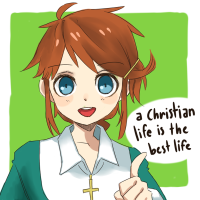
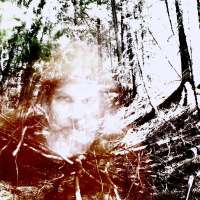

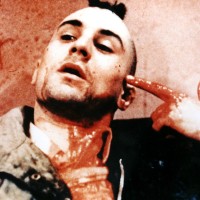

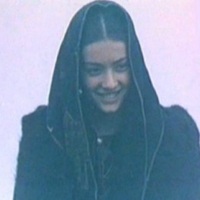
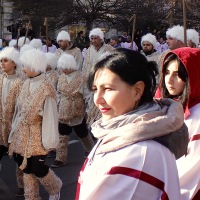

Leave a comment